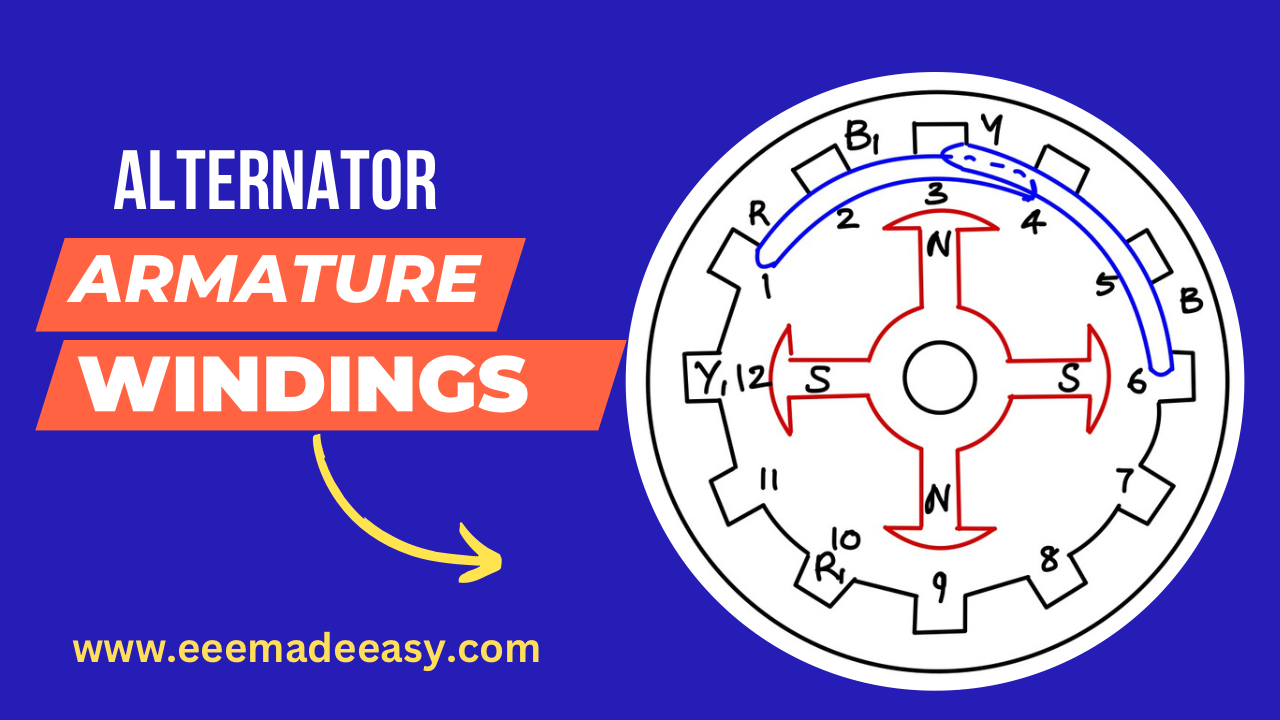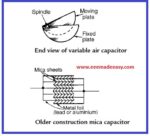The armature windings in alternators are different from those used in d.c. machines.
Difference between Armature windings of DC Machines and Alternators
The d.c. machines have closed circuit windings but alternator windings are open, in the
sense that there is no closed path for the armature currents in the winding itself.
One end of the winding is joined to the neutral point and the other is brought out (for a star-connected armature).
types of armature windings
The two types of armature windings most commonly used for 3-phase alternators are :
(i) single-layer winding
(ii) double-layer winding
Single-layer Winding
It is variously referred to as concentric or chain winding.
Sometimes, it is of simple bar type or wave winding.
The fundamental principle of such a winding is illustrated in Fig below.
which shows a single-layer, one-turn, full-pitch winding for a four-pole generator.
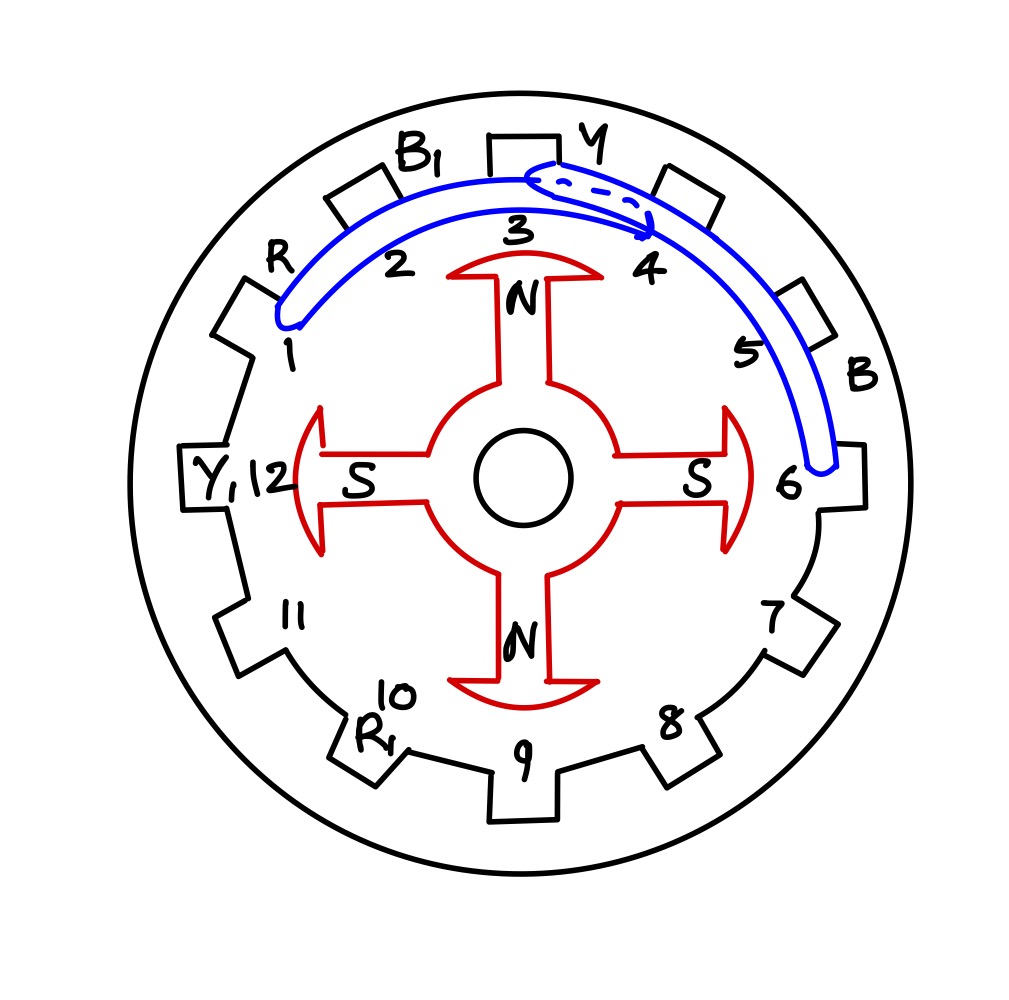
There are 12 slots in all, giving 3 slots per pole or 1 slot/phase/pole.
The pole pitch is obviously 3.
To get maximum e.m.f., two sides of a coil should be one pole-pitch apart i.e. coil span should
be equal to one pole pitch.
In other words, if one side of the coil is under the centre of a N-pole, then the, other side of the same coil should be under the centre of S-pole i.e. 180° (electrical) apart.
In that case, the e.m.fs. induced in the two sides of the coil are added together.
It is seen from the above figure, that R phase starts at slot No. 1, passes through slots 4, 7 and
finishes at 10.
The Y-phase starts 120° afterwards i.e. from slot No. 3 which is two slots away from the start of R-phase (because when 3 slots correspond to 180° electrical degrees, two slots correspond to an angular displacement of 120° electrical).
It passes through slots 6, 9 and finishes at 12. Similarly, B-phase starts from slot No.5 i.e. two slots
away from the start of Y-phase.
It passes through slots 8, 11 and finishes at slot No. 2, The developed diagram is shown in Fig. given below
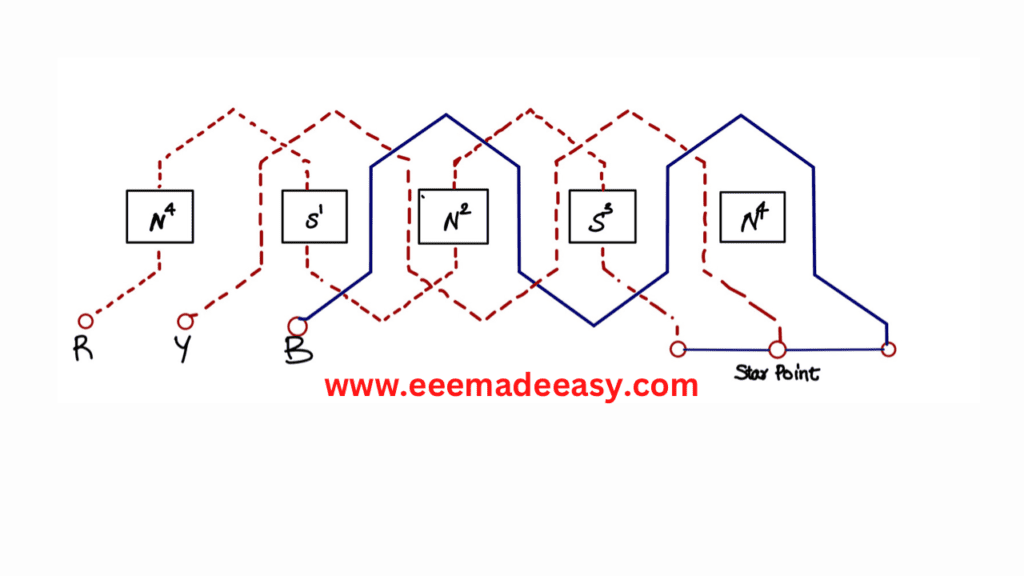
The ends of the windings are joined to form a star point for a Y-connection.
Concentric or Chain Windings
For this type of winding, the number of slots is equal to twice the number of coils or equal to the number of coil sides.
In Fig. given below is shown a concentric winding for 3-phase alternator. It has one coil per pair of poles per phase.
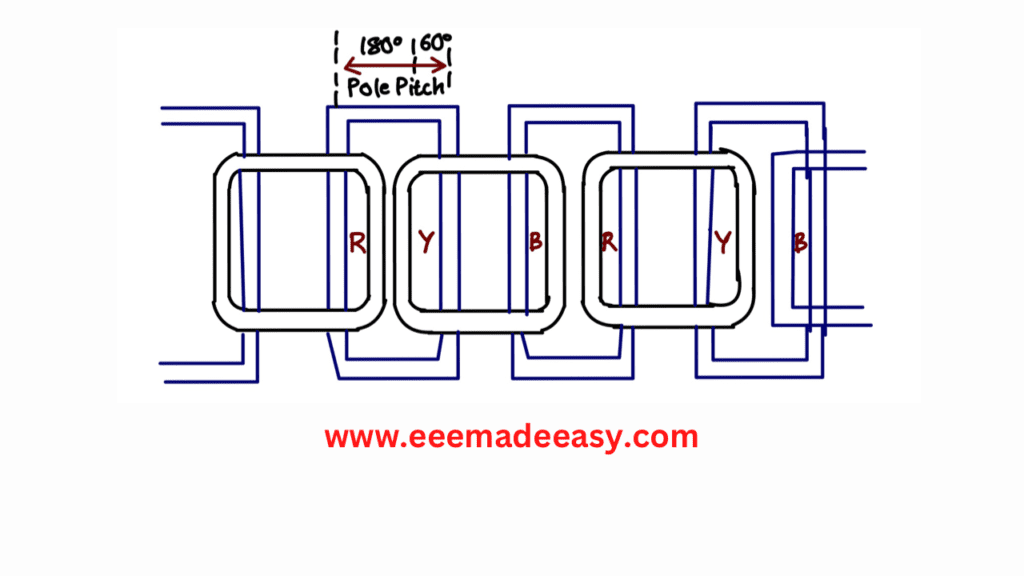
It would be noted that the polar group of each phase is 360° (electrical) apart in this type of winding
- It is necessary to use two different shapes of coils to avoid fouling of end connections.
- Since polar groups of each phase are 360 electrical degrees apart, all such groups
are connected in the same direction. - The disadvantage is that short-pitched coils cannot be used.
Another type is aconcentric winding with two coils per group per pole.
Different shapes of coils are required for this winding.
All coil groups of phase R are connected in the same direction. It is seen that in each group, one coil has a pitch of 5/6 and the other has a pitch of 7/6 so that pitch factor (explained later) is 0.966.
Such windings are used for large high-voltage machines.
Two-Layer Winding
This winding is either of wave-wound type or lap-wound type (this being much more common especially for high-speed turbo-generators).
It is the simplest and, as said above, most commonly-used not only in synchronous machines but in induction motors as well.
Two important points regarding this winding should be noted :
(a) Ordinarily, the number of slots in stator (armature) is a multiple of the number of poles and the
number of phases. Thus, the stator of a 4-pole, 3-phase alternator may have 12, 24, 36, 48 etc.
slots all of which are seen to be multiple of 12 (i.e. 4 × 3).
(b) The number of stator slots is equal to the number of coils (which are all of the same shape).
In other words, each slot contains two coil sides, one at the bottom of the slot and the other
at the top. The coils overlap each other, just like shingles on a roof top.
Electrical Machines Best Books
| Sl no. | Book Title | Author | Buy Link |
|---|---|---|---|
| 1 | Textbook Of Electrical Technology : Ac And Dc Machines (volume – 2) | B L Theraja, AK Theraja | check price |
| 2 | Theory & Performance of Electrical Machines | J.B. Gupta | check price |
| 3 | Electrical Machines | by V.K Mehta, Rohit Mehta | check price |
| 4 | Electric Machines | PS Bimbhra | check price |
| 5 | Electrical Machines | S.K. Bhattacharya | check price |
- Read Here Synchronous machines notes and MCQs
- Read about Synchronous Machines
- Construction of Synchronous Machines
- Read Here Electrical and Mechanical Degrees in Synchronous Machines
- Synchronous Machines Advantages and disadvantages
- Parallel operations of Alternators
- Synchronous machines MCQ 3
- Synchronous machines MCQ 2
- Synchronous machines MCQ 1
- Single phase alternator|Synchronous Generator
- Three-phase alternator|3 phase Synchronous Generator
- Environment MCQ for RRB JE CBT 2|Objective Questions Environment for Competitive Exams
- RRB JE CBT 2 Computer Awareness Book Arihant|Objective Computer Awareness Book 2025
- RRB JE CBT 2 Exam Date 2025 Postponed|RRB JE CBT 2 Exam Date
- [PDF]RRB JE Result 03/2024 Cut off, Selected no of candidates for all regions
- [PDF]Final Answer Key Junior Instructor Mechanic Agricultural Machinery|643/2023 Solved Question paper
- Acoustics MCQs|Industries Extension officer|IEO 2025
- LASER MCQs| Industries Extension officer|IEO 2025
- Practical Types of Capacitors
- [PDF] Syllabus JUNIOR INSTRUCTOR MECHANIC AGRICULTURAL MACHINERY|643/2023 Syllabus Kerala PSC
- [PDF] Syllabus JUNIOR INSTRUCTOR WOOD WORK TECHNICIAN|674/2023 Syllabus Kerala PSC
- [PDF] Syllabus JUNIOR INSTRUCTOR MECHANIC CONSUMER ELECTRONIC APPLIANCES|670/2023 Syllabus Kerala PSC
- [PDF] Junior Instructor Hospital Housekeeping| 646/2023 syllabus Kerala PSC
